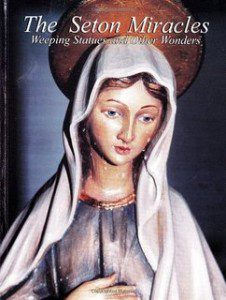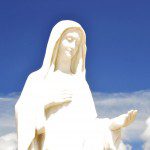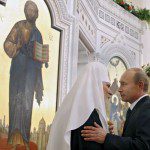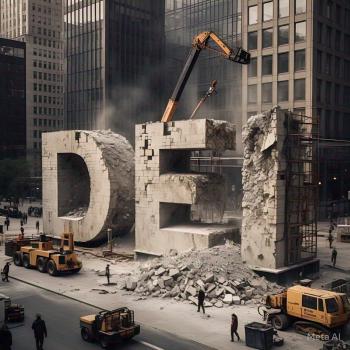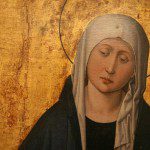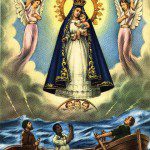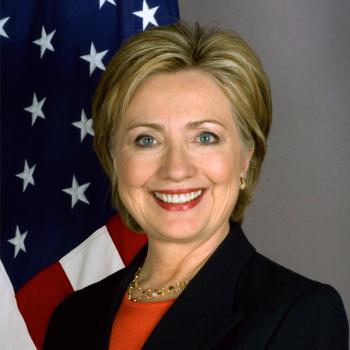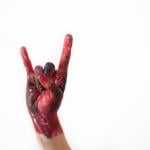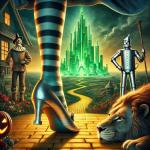By Stephen Ryan
In 2010, Justice Scalia spoke to a room full of judges and lawyers, and mentioned the extraordinary case of weeping statues that took place in a suburb of Washington, D.C. The Supreme Court justice said:
“Why wasn’t that church absolutely packed with nonbelievers,” Scalia asked, “seeking to determine if there might be something to this?”
The miraculous events that Justice Scalia is referring to are simply unprecedented.
In the entire history of the Catholic Church, there may be no greater occurrence of weeping statues and other physical signs of God’s presence through the Blessed Virgin Mary that what took place on the outskirts of our Nation’s Capitol in 1991 – 1993″from the book “Seton Miracles”
In a lecture to the St. Thomas More Society, Justice Scalia outlined a long list of Christian beliefs that he said are greeted with derision by the worldly — dogmas including Christ’s divinity, the virgin birth and Christ’s resurrection.
He argued that “It isn’t irrational to accept the testimony of eyewitnesses to miracles. What is irrational,” is to reject a priori, with no investigation, the possibility of miracles in general and of Jesus Christ’s resurrection in particular — which is, of course, precisely what the worldly wise do.”
Justice Scalia then cited a case of a priest in the Arlington archdiocese who was said to have the stigmata. Statues of the Virgin Mary appeared to weep in his presence. Reporters for The Washington Post did a story and were unable to find an explanation for the strange phenomena. The events came to be known as the Seton Miracles.
“Why wasn’t that church absolutely packed with nonbelievers,” Justice Scalia asked the room full of elite lawyers, “seeking to determine if there might be something to this?”
The answer was obvious, he said: “The wise do not investigate such silliness.”
The events that took place in the sleepy D.C. suburb are simply extraordinary and our expertly documented by Harvard lawyer James Carney in his fascinating book “The Seton Miracles : Weeping Statues and other Wonder. Here is a brief summary of the Seton Miracles:
In 1991 a Catholic parish priest attracted national media attention, as well as thousands of visitors to the local Catholic church, in Lakeridge Va. a few miles south of Washington D.C. because of eyewitness accounts claimed that he caused statues of the Virgin Mary to weep tears or blood in his presence.
The Rev. James Bruse, an unassuming associate pastor at St Elizabeth Ann Seton Church in Lake Ridge, Virginia. told his superior hid superior about what was happening to him.
The priest, Father Daniel Hamilton, reported he saw the wounds of Christ known as “Stigmata” on Bruse’s wrists and a statue in Bruse’s room produced blood. After his eye witness account he told the press : Of course I doubted it in the beginning … And then… I saw some of this stuff he’d been talking about. It’s true. That’s all I can tell you. It’s true. It’s true.”
According to parish officials and church parishioners, many times during, before, or after a church service, hundreds in attendance saw the church’s statue of the Virgin Mary cry. Other statues on the parish grounds also wept as well. After Fr. Bruse celebrated Mass at a nearby church, water reportedly began dripping from the church’s wooden statue of the Virgin Mary as well. The statues wept irregularly but always in the presence of Father Bruse.
A Washington Post reporter who covered the story, and personally witnessed a crying statue while interviewing Bruse, wrote, “There’s gotta be a trick here. It’s as if the water is just appearing right out of the plaster and then rolling downward. Proof positive you can be seeing something and still not believe you’re seeing it.” Some church parishioners, however, are in no doubt. Tom Saunders, a local church-goer, has photos of a weeping statue, and says one statue “cried in my hand”. Saunders says he’s seen at least a dozen statues cry. “When you see it, it’s hard to believe at first,” he says. “But it’s there.” (Source: Washington Post; USA Today)
Within days of the Washington Post story a CBS affiliate filmed the statues weeping. The story of the weeping statues and the priest experiencing the stigmata quickly became a worldwide media sensation. The Washington Post and a throng of national and international news organizations descended onto the community to report and investigate the miraculous occurrences. To this day, the spontaneous media frenzy stands as singular moment in television history in the coverage of mystical religious phenomena. There were hundreds, if not thousands, of credible witnesses who saw the Virgin Mary weep.
Witnesses included lawyers, priests of course, military officers and government employees. Most significantly the Bishop of the Arlington Diocese, John R. Keating along with Monsignor William Reinecke both witnessed the weeping Madonnas in the Bishop’s office.
In the book “The Seton Miracles” Jim Carney – an eye witness to the events wrote:
“On March 2, 1992 Father Hamilton – pastor to the St. Elizabeth Ann Seton Catholic Church and Father Bruse met with Bishop Keating at the Chancery along with Monsignor William Reinecke. Both prelates had Madonna statues. Bishop Keating had two in his office and Monsignor Reinecke brought one of his own. In addition, Fr Bruse, had brought his little Fatima statue with him. All the statues wept. Reportedly, this convinced Bishop Keating that the weeping is a genuine phenomenon and should be so treated.”
The events have been described by some as the single greatest manifestation of the supernatural or physical signs of God’s real presence in the history of the Catholic Church.
Clearly, from Justice Scalia’s own words, the unresolved case of the “Weeping Statues” in Northern Virginia touched him in an emotional way and most certainly contributed to his deep belief in the supernatural character of the Catholic faith. – including his belief in apparitions of the Blessed Mother and the reality of Satan.

